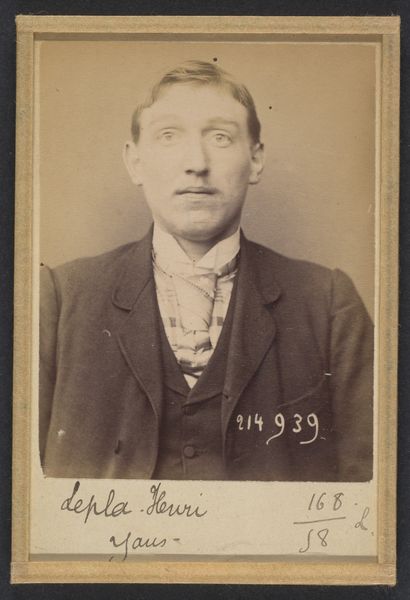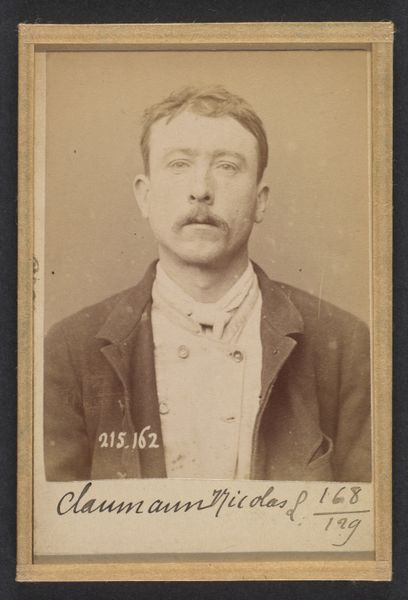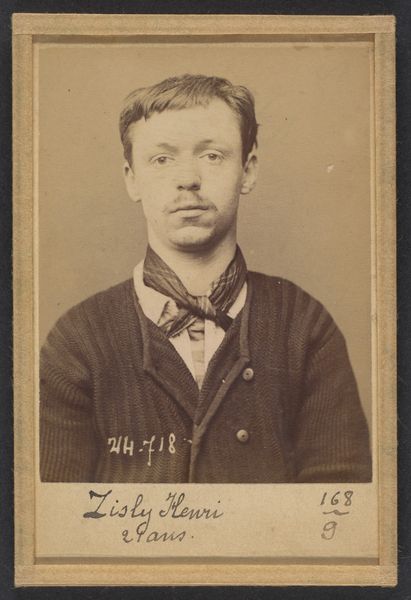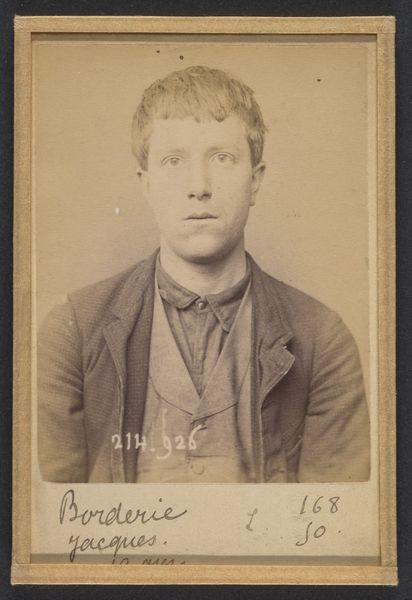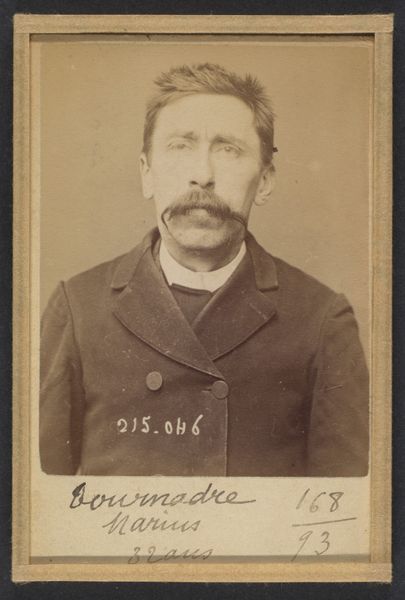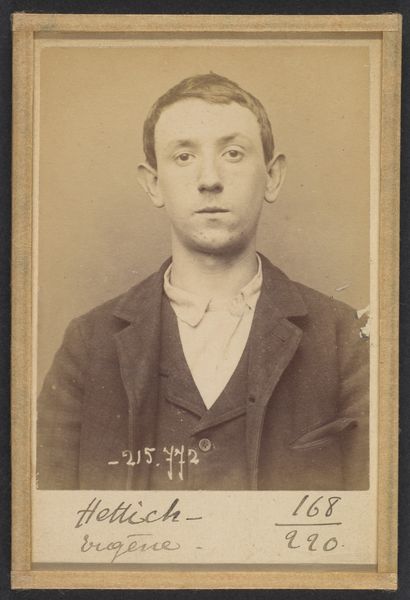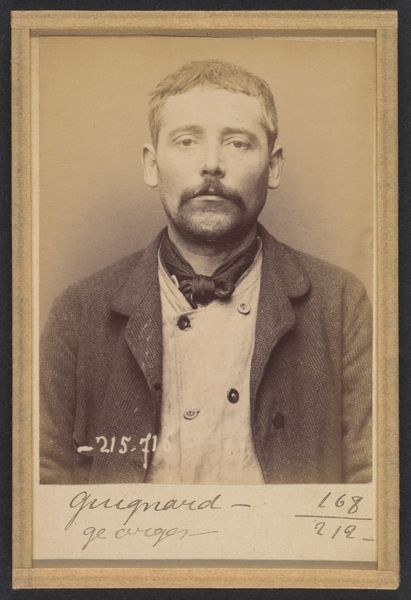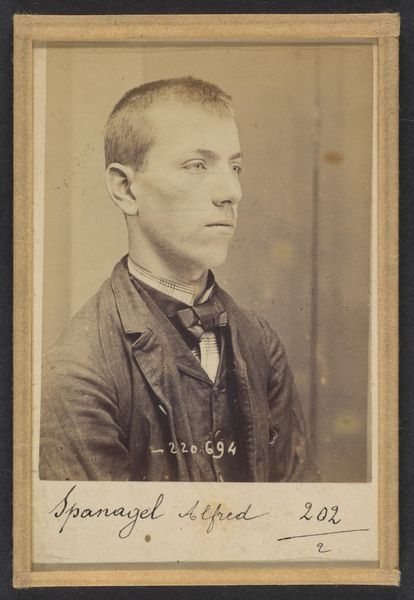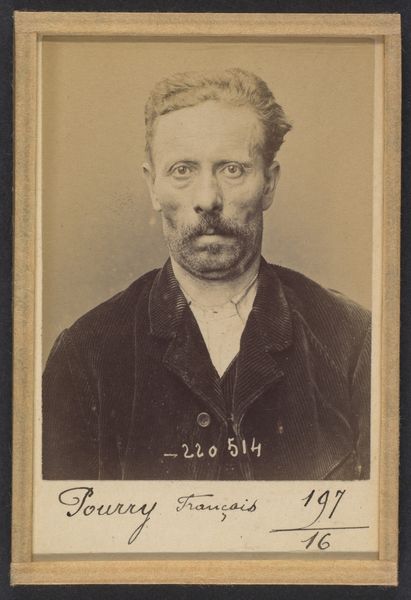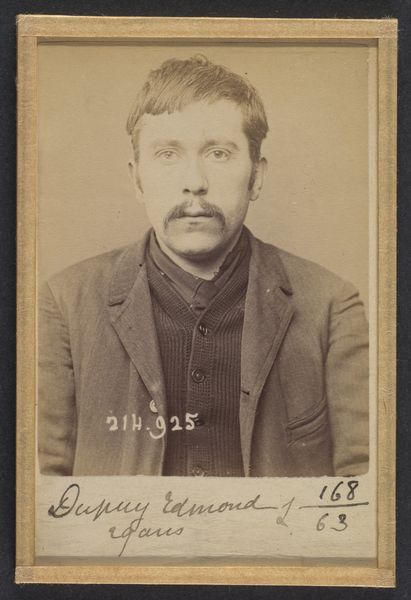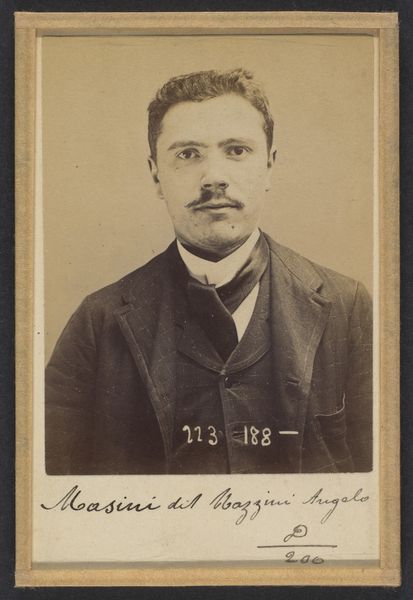
Raboin. Émile, Pierre. 41 ans, né à Ouzoir-sur-Loire (Loiret). Distillateur. Assoc. de malfaiteurs. 28/2/94 1894
0:00
0:00
photography, albumen-print
#
portrait
#
portrait
#
photography
#
ashcan-school
#
albumen-print
Dimensions: 10.5 x 7 x 0.5 cm (4 1/8 x 2 3/4 x 3/16 in.) each
Copyright: Public Domain
Editor: This is an albumen print photograph from 1894 titled "Raboin. Émile, Pierre. 41 ans, né à Ouzoir-sur-Loire (Loiret). Distillateur. Assoc. de malfaiteurs. 28/2/94" by Alphonse Bertillon. It's a mugshot, really, but something about his posture suggests defiance to me, not guilt. How do you read this image? Curator: It's fascinating how Bertillon's "mugshots" intersect with ideas of identity, power, and the very construction of criminality. While seemingly objective, this portrait is embedded in a system of surveillance. Think about it: whose faces get captured, categorized, and archived? This image isn't just about Raboin; it's a statement about the authority claiming to define him. Editor: That's true. There's a whole history of marginalized people being targeted in photography. Curator: Exactly. And notice how Bertillon employs techniques typically associated with formal portraiture - controlled lighting, deliberate posing - within a context of criminal documentation. Doesn’t this tension itself speak volumes? This approach raises crucial questions about who has the power to represent whom, and for what purpose. Editor: So it's less about the individual and more about the system around him. Curator: Precisely. Consider Foucault’s work on the panopticon or Said’s theories regarding power and representation. These images contributed to a system where individuals could be classified and controlled based on physical attributes. How might contemporary facial recognition technology extend or challenge Bertillon's initial intentions? Editor: That’s a very unsettling question. I didn't see this as a social statement, just as a picture of someone arrested, but now I get how complex a “simple” mugshot can be! Curator: Absolutely. And perhaps thinking about images like these critically encourages us to examine power dynamics within photography today. The role of the photographer – then and now.
Comments
No comments
Be the first to comment and join the conversation on the ultimate creative platform.
